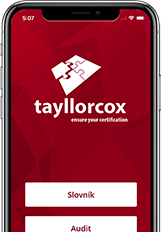 VMware NSX Advanced Load Balancer: Install, Configure, Manage
VMware NSX Advanced Load Balancer: Install, Configure, Manage
This five-day, fast-paced course provides comprehensive training on how to install, configure, and manage a VMware NSX® Advanced Load Balancer™ (Avi Networks) solution. This course covers key NSX Advanced Load Balancer (Avi Networks) features and functionality offered in the NSX Advanced Load Balancer 18.2 release.

Virtual Training nebo e-Learning?
Máme dostatečnou flexibilitu, takže vybírat můžete jak prezenční termíny, tak online kurzy.
Zkuste živý kurz virtuálněTarget group
Experienced system administrators or network administrators

Course structure
Course Introduction
- Introductions and course logistics
- Course objectives
Introduction to NSX Advanced Load Balancer
- Introduce NSX Advanced Load Balancer
- Discuss NSX Advanced Load Balancer use cases and benefits
- Explain NSX Advanced Load Balancer architecture and components
- Explain the management, control, data, and consumption planes and their respective functions
Virtual Services Configuration Concepts
- Explain Virtual Service components
- Explain Virtual Service types
- Explain and configure basic Virtual Service components such as Application Profiles, Network Profiles, Pools, and Health Monitors
Profiles and Policies
- Explain and deep dive on Advanced Virtual Service creation
- Explain and deep dive on Application Profiles and Types such as L4, DNS, Syslog, and HTTP
- Explain and configure advanced application HTTP Profile options
- Deep dive on Network Profiles and Types
- Explain and configure SSL Profiles and Certificates
- Explain and Configure HTTP and DNS policies
Pools Configuration Concepts
- Explain and deep dive on Pools configuration options
- Describe available Load Balancing algorithms
- Explain multiple Health Monitor types
- Explain multiple Persistence Profiles
- Explain and configure Pool Groups
Modifying Application Behavior
- Design and apply application solutions leveraging application profiles
- Design and apply application solutions leveraging Network and HTTP Policies and DataScripts
- Explain DataScript fundamentals
- Explain and leverage NSX Advanced Load Balancer analytics to understand application behavior
- Describe and configure Client SSL Certificate Validation
- Describe and configure Virtual Service DDoS, Rate Limiting, and Throttling capabilities
- Modify Network Profiles properties such as TCP connection properties
- Design and apply application solutions leveraging Persistence Profiles
NSX Advanced Load Balancer Infrastructure Architecture
- Deep dive on the management, control, data, and consumption planes and functions
- Describe Control Plane Clustering and High Availability
- Describe Controller Process Sharding
- Describe Controller Sizing
- Describe Service Engine CPU and NIC Architecture
- Explain Tenants
- Deep dive and configure properties of Service Engine Groups
- Explain Service Engine Group High Availability Modes
- Describe and configure Active/Standby High Availability Mode
- Describe and configure Elastic HA High Availability Mode (Active/Active, N+M)
- Explain Service Engine Failure Detection and Self-Healing
- Describe Service Engine as a Router
- Deep dive on Virtual Service scale out options, such as Layer 2 (Native), Layer 3 (BGP), and DNS-based
- Explain Infrastructure Upgrade process
Introduction to Cloud Connectors
- Introduce Cloud Connectors
- Review Cloud Connector integration modes
- Introduce Cloud Connector types
Install, Configure, and Manage NSX ALB in No Access Clouds
- Explain No Access Cloud concepts
- Configure No Access Cloud integration
- Explain and Configure Linux Server Cloud
- Describe the Advanced Configuration options available in Bare-Metal (Linux Server Cloud)
Install, Configure, and Manage NSX ALB in VMware environments
- Introduce VMware integration options
- Explain and configure VMware No Access Cloud Connector
- Explain and configure VMware Write Access Cloud Connector
- Describe VMware Write with NSX-V Access Cloud Connector
- Describe VMware NSX-T integration
Install, Configure, and Manage NSX ALB in Public Clouds (AWS)
- Describe NSX Advanced Load Balancer Public Cloud integrations
- Explain and demonstrate AWS Public Cloud Integration
- Describe Azure Public Cloud Integration
DNS Foundations
- Review, discuss, and explain DNS fundamentals
- Describe NSX Advanced Load Balancer DNS and IPAM providers
Global Server Load Balancing
- Introduce Global Server Load Balancing Concepts and Benefits
- Explain and configure NSX Advanced Load Balancer infrastructure
- Explain and configure DNS Virtual Service components
- Explain and configure GSLB Service Engine Group
- Describe and configure GSLB Sites
- Explain and configure basic GSLB Services to include pools and health monitors
- Describe GSLB Service Load Balancing algorithms
- Explain and configure Data and Control Plane-based Health Monitors
- Describe GSLB Health Monitor Proxy
Troubleshooting
- Introduce Infrastructure and Application Troubleshooting Concepts
- Describe Control Plane and Data Plane-based Troubleshooting
- Explain Application Analytics and Logs
- Describe client logs analysis
- Explain Headers troubleshooting and Packet Capture mechanism
- Leverage CLI for detailed data plane troubleshooting
- Explain Service Engine Logs
- Explain Health Monitors troubleshooting
- Explain BGP session troubleshooting
- Describe Control Plane Troubleshooting, Clustering, and Cloud Connector issues
Monitoring NSX Advanced Load Balancer Solution
- Describe NSX Advanced Load Balancer Events
- Describe and configure NSX Advanced Load Balancer Alerts
- Describe NSX Advanced Load Balancer monitoring capabilities, leveraging SNMP, Syslog, and Email
Introduction to NSX ALB Programmability and Automation
- Introduce NSX Advanced Load Balancer REST API interface
- Describe REST API Object Schema
- Explain and interact with REST API interface, leveraging browser and command line utility
- Explain Swagger-based API documentation
- Review 3rd-party automation integrations
Jak kurz hodnotí absolventi?
V čem jsou naše reference výjimečné? Nejsou to jednorázové akce. K nám se lidé vrací rádi a nezavírají před námi dveře.
Podívejte se na úplný seznam referenčních klientů, kteří na nás nedají dopustit.
Chcete to připravit na míru? Kontaktujte nás!
Zavolejte nám a my vám poradíme.
Jsme vám k dispozici na telefonním čísle +420 222 553 101 vždy od pondělí do pátku: 9:00 - 17:00.
Nemůžete volat? Zkuste nám napsat
Chcete získat dárek k narozeninám?


